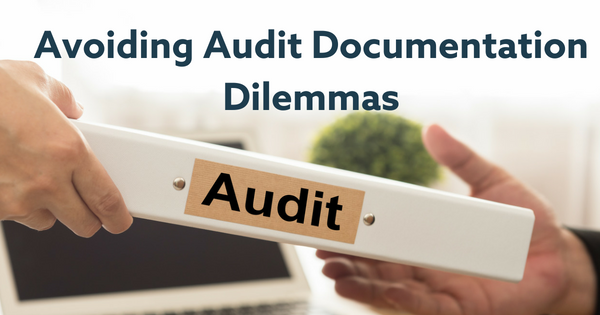
In the Auditor’s Responsibility section of the audit report, auditors discuss their responsibility to express an opinion and that they conducted the audit in accordance with GAAS and potentially other standards (e.g., the Yellow Book, the Uniform Guidance for Federal Awards, etc.). Since auditors are required to apply AU-C section 230, Audit Documentation, as part of conducting an audit in accordance with GAAS, if sufficient appropriate evidence necessary to support the opinion was not properly documented, then the audit was not performed in accordance with GAAS.
However, sometimes confusion arises over precisely what constitutes proper documentation. For example, pretend that you are performing the peer review of Tick & Tie, CPAs and reviewing the audit documentation for a not-for-profit audit. In the area of contributions receivable, you observe the following note “Reviewed contributions receivable detail and tested assertions related to valuation, completeness, and existence.” The note also has dated signoffs from the preparer and reviewer. Do you believe Tick & Tie, CPAs sufficiently documented their testing of contributions receivable?
In this example, the documentation prepared by Tick & Tie, CPAs does tell us certain things including: (1) who performed the work and the date the work was completed; (2) who reviewed the work and the date of the review; and (3) the assertions tested. However, unfortunately the documentation does not tell us certain things which are required by AU-C section 230 such as: [1] the nature and extent of the procedures performed (e.g., did the auditor foot and agree the detail to the trial balance, did they review the underlying support for the contributions, were any amounts confirmed, did they look at everything or contributions over a certain dollar amount); or [2] the results of the procedures performed, and the evidence obtained (e.g., did the auditor ultimately conclude that the contributions receivable balance appears proper and how he/she arrived at that conclusion). Thus, it would be difficult to say that Tick & Tie, CPAs sufficiently documented their testing of contributions receivable.
Interested in learning more about having proper audit documentation? Sign up for Latest Developments in Government and Nonprofit Accounting and Auditing.
Charlie Blanton, CPA is Senior Director of Governmental and Nonprofit Content for Surgent CPE, where he authors Surgent’s government and not-for-profit CPE courses and is a frequent webinar instructor. Charlie has over 25 years of experience in auditing and industry having worked at KPMG, the Texas Society of CPAs, Taylor Publishing, Texas Wesleyan University, and the AICPA.




